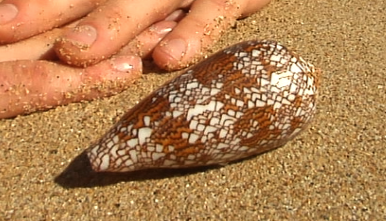

You may freely use NSF-credited images and, at your discretion, credit NSF with a "Courtesy: National Science Foundation" notation.Īdditional information about general usage can be found in Conditions.Īlso Available: Download the high-resolution TIFF version of the image. The images were created by employees of the United States Government as part of their official duties or prepared by contractors as "works for hire" for NSF. Images credited to the National Science Foundation, a federal agency, are in the public domain. All media in the gallery are intended for personal, educational and nonprofit/non-commercial use only. Images and other media in the National Science Foundation Multimedia Gallery are available for use in print and electronic material by NSF employees, members of the media, university staff, teachers and the general public. Olivera's long-term goal is to use the peptides to treat even more elusive conditions such as Alzheimer's and Parkinson's disease, schizophrenia and depression. "Sleepy" or "sluggish" peptides could be used as anti-epilepsy medications to tame nerve cells that fire out of control during seizures. Paralyzing peptides might be used as anesthetics. The clinical applications of Conus toxins are inspired by the snails own biology. Some have already begun to tap the potential of dozens of cone snail peptides to treat disorders including pain, epilepsy, cardiovascular disease and various neurological disorders. Pharmaceutical companies realize that peptides with such specificity may hold promise in the development of highly effective medications with very few side effects. In fact, these peptides are so accurate in pinpointing their targets that they are now used by neuroscientists to identify and study specific brain proteins. Olivera discovered that the peptide that puts newborn mice to sleep locks onto a corner of one type of brain protein. By blocking these channels, the toxins shut down messages between the brain and muscles, causing paralysis or electrical shock in a snail's prey. In many cases, these molecules are "channel" proteins that control the flow of electrically charged particles such as calcium, sodium and potassium, into and out of cells. His team discovered that each toxin hones in on just one type of molecule. To really understand how the venom works, Olivera's group isolated and characterized individual toxins in the deadly potions. This raised a number of questions: What were the peptides doing? How did they work? Could he find which ingredient caused the odd behaviors? Could it be harnessed as a medicine?


One of the peptides even caused different reactions, depending on the age of the mouse-it put newborn mice to sleep but whipped adult mice into a hyperactive frenzy. Depending on which peptide the researchers injected, the mice would shake, sleep, scratch, convulse or become sluggish. Several years later, Craig Clark, an undergraduate student on Olivera's team at the University of Utah, came up with the idea to inject components of the venom directly into the central nervous system, instead of into the abdomen of mice. They discovered that the venom contained not one, but many different nerve toxins, which turned out to be peptides-small, protein-like molecules.
#Textile cone snail series
In order to find the secret paralyzing ingredient in snail venom, Olivera and his research team chemically divided the venom into a series of different fractions and injected them one by one into mice. geographus venom into the abdomens of mice, causing them to immediately became paralyzed. When Olivera began his cone snail research in the 1960s, while living in the Philippines, his initial goal was to purify whatever caused human fatalities from C. (Year of image: 2002) More about this imageīaldomero "Toto" Olivera, a biochemist at the University of Utah, may have discovered relief for thousands who suffer from intractable pain, epilepsy or neurodegenerative disorders.įor the past 30 years, Olivera has studied the cone snail species Conus geographus, an animal so lethal that one sting kills an adult within hours. textile's main diet consists of other cone snails. The molluscivorous cone snails like Conus textile feed on other mollusks and are known to be cannibalistic. They belong to the family Conidae, genus Conus, and there are more than 1,000 species known.Ĭone snails prey upon other marine organisms, immobilizing them with unique venoms, and are classified by what they feed on. Cone snails are marine snails found in reef environments throughout the world. JCone snail species Conus textileĬone snail species Conus textile.


 0 kommentar(er)
0 kommentar(er)
